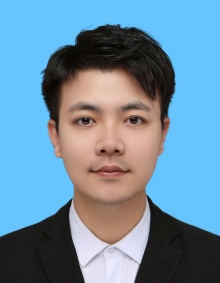Shou Lio
PhD Candidate
Mark Swihart Research Group
Mixing Elements through Flame and Entropy
Mixing variates together is the cornerstone for new materials discovery. However, the Hume-Rothery rules governing solid-state miscibility limit the mixing of different elements in a single-phase crystal structure. Here, we demonstrate how elemental immiscibility can be overcome through rapid flame reaction and enhanced configurational entropy. The kinetic and thermodynamically driven synthesis method expands the inorganic material compositional space to almost infinity. In this case, a range of metastable solid solutions, high-entropy ceramic, high-entropy alloy, and high-entropy MOF nanomaterials were successfully fabricated. These novel materials show promising performance in diverse fields, such as methane reforming, CO2 utilization, pollutants purification, fuel cells, water electrolysis, sensors, and thermal insulation.
Bio
Shuo Liu obtained his B.S. and M.S. degrees from the Department of Inorganic Material Science at Jilin University (China). Currently, he is a Ph.D. candidate in the Department of Chemical Engineering at SUNY Buffalo. His research interest focuses on the development of novel inorganic materials, as well as exploring their applications in energy and environmental fields, including catalysis, electrochemistry, separation and purification, sensors, thermal management, and solid waste recycling.
Wednesday
May 1, 2024
- Time: 11:00 AM
- Location: 206 Furnas Hall

Shuo Liu
PhD Candidate
Mark Swihart Research Group
Qi Yang
PhD Candidate
Sriram Neelamegham Research Group
The glycobiology of SARS-CoV-2 virus and development of virus-like-particles (VLPs) for mRNA delivery
SARS-CoV-2 virus-like-particles (VLP) are ~100 nm minimalist units composed of the four structural proteins of the authentic virus. We undertook extensive molecular engineering to optimize these VLPs, to determine if they can be used for mRNA delivery. Cloning the N protein upstream of M-IRES-E resulted in a 3 plasmid (3P) VLP system that displayed ~7-fold higher viral entry efficiency compared to VLP formed by co-transfection with 4 plasmids. >90% of ACE2 expressing cells could be transduced using these 3P VLPs. Viral tropism could be readily modified by trans-complementing with spike protein from other coronavirus, and also the Vesicular stomatitis virus G protein (VSV-G). VLP synthesis could be further simplified into a 2 plasmid (2P) system where one vector carried the viral surface glycoprotein and the second carried the remaining SARS-CoV-2 structural proteins and reporter gene. This 2P system could greatly streamlined wet-lab experimental workflows. The SARS-CoV-2 VLP could be engineered to carry up to four genes, including functional Cas9 mRNA for genome editing. Gene editing is specific target cell types was possible by switching viral surface glycoprotein to tune VLP tropism. Successful mRNA delivery to mouse lungs, suggests that the SARS2 VLPs could be used for pulmonary gene delivery. Overall, the study describes the systematic advancement of SARS-CoV-2 VLP platform for robust mRNA delivery both in vitro and in vivo.
Bio
Qi Yang is a PhD candidate in Chemical and Biological Engineering from Dr. Sriram Neelamegham's laboratory. He has been focused on the glycobiology of SARS-CoV-2 virus and has determined the critical roles of glycans on SARS-CoV-2 viral function. Additionally, he has also explored the potential application of SARS-CoV-2 virus-like-particles (VLPs) for mRNA gene payload delivery. Functional Cas9 mRNA can be successfully delivered using the VLPs into target cells and gene editing was achieved.

Qi Yang
Phd Candidate
Sriram Neelamegham Research Group